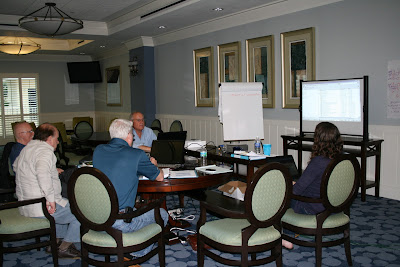1. What specific steps can leaders take to move employees from disengagement to engagement?
Senior Leadership-Very little..Role is vision and set tone for culture
Managers- A great deal. Role is to manage the engagement levels. To know, understand and address the key drivers of motivation. To then connect the engaged worker to the “business of the business”, to include culture, process, training, and customer requirements
2. HR leaders can enhance their strategic contribution by having a greater understanding of the CEO’s point of view. What, according to you, are the things that your CEO will never tell you but HR needs to know?
HR needs to know what’s required of them to make the “business of the business” work according to the vision and projections. What tools, skills and training does the workforce need to meet the customers’ demands?
HR also needs to know what the CEO knows about the customer loyalty strategy. Many times the CEO doesn’t know, especially if the business strategy is correlated to the known customers buying needs and habits
3. A recent study of human resources and leadership development executives, conducted by the Wall Street Journal, showed that the #1 most sought after executive skill is strategic thinking. Unfortunately, 90% of directors and vice presidents have never had any education in strategic thinking. How can HR practitioners master this discipline?
Strategic thinking if correlated to customers sets the core. HR must be involved in the customer satisfaction surveys, be linked to customer service. This is the #1 strategic visioning.. The rest are tactics on execution of that customer strategy.
Can HR master the discipline? Not as long as leadership and HR are not at the same table, and that HR has not mastered an understanding of the business concepts of alignment. HR must expand their span of understanding of business principles. If not, HR will always be considered as just having a benefits analysis function.
4. While HR training can actually improve the business bottom line, organizations often fumble with the knowledge and understanding of establishing expectations and auditing procedures to drive measurable results throughout the organization. How can organizations get it right?
HR training means what? HR is trained or the workforce is being trained.
To get it right, training must be associated with the “business of the business”. Training needs to be targeted to the party that needs to modify their behaviours or improve their skills in their job description.
The expensive, global “all inclusive” training sessions have not produced a desired ROI return
Hence, you start with an employee engagement survey customized for the “business of the business”. Knowledge of need, by work group, is the key. Measure drivers of engagement as well as business/process/culture/manager functions. IT MUST BE CUSTOMIZED to have attachment to a change process.
5. Could you please highlight key steps necessary to sustain an engaged culture, improve business results and maintain credibility with employees while reinforcing that success involves the “mutual commitment” of both the leadership and employees?
1. Understand and measure the key drivers of the people, correlated to the business, using a customized employee engagement diagnostic with extensive demographics, measuring
a. Engagement of people
b. Customer focused links
c. Culture
d. Process
e. Strategy knowledge
f. Manager and leaders competencies
2. Leadership crystallize the business objectives for the population
3. Make certain the next level of leadership are aligned with each other; then if it’s deployed vertically downward. This is Line Of Sight and the essence of strategy deployment
4. Each manager now becomes the bearer of the “torch”. From the diagnostic, mentoring-coaching each manager to behave better, align the department to the vision and execute the “business of the business” becomes the key to rapid transformation, accountability and sustained results. This is the value chain and service profit chain. It’s the place where customer loyalty begins and ends.
5. To have sustain results, certified, internal experts will continue to work with managers long after the experts leave, using the diagnostic results
6. Please outline the blueprint to leading organizational change in a way that increases employee engagement, and at the same time, improves morale, productivity and retention?
See above
7. Having attended the SHRM Annual Conference in 2010, how do you think professional development conferences and certification contribute to employee engagement and development? In your view, what impact do these have on an employee’s personal and professional advancement?
Competent certified internal consultants can bring organizations to the highest stare of readiness for change. The certification is a speciality centered on building an employee engagement culture, aligned to “the business of the business”. Without it, sustained change will most likely not be achieved. Habit is the most difficult behaviour to change as all behaviours and the actions we take in a stimuli return to a familiar mold without outside intervention. This certification needs to boarder on organizational development consulting training-not off the shelf typical materials.






